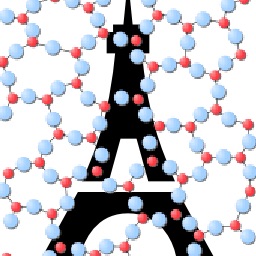Order and disorder in calcium–silicate–hydrate
Despite advances in the characterization and modeling of cement hydrates, the atomic order in Calcium–Silicate–Hydrate (C–S–H), the binding phase of cement, remains an open question. Indeed, in contrast to the former crystalline model, recent molecular models suggest that the nanoscale structure of C–S–H is amorphous. To elucidate this issue, we analyzed the structure of a realistic simulated model of C–S–H, and compared the latter to crystalline tobermorite, a natural analogue of C–S–H, and to an artificial ideal glass. The results clearly indicate that C–S–H appears as amorphous, when averaged on all atoms. However, an analysis of the order around each atomic species reveals that its structure shows an intermediate degree of order, retaining some characteristics of the crystal while acquiring an overall glass-like disorder. Thanks to a detailed quantification of order and disorder, we show that, while C–S–H retains some signatures of a tobermorite-like layered structure, hydrated species are completely amorphous.
